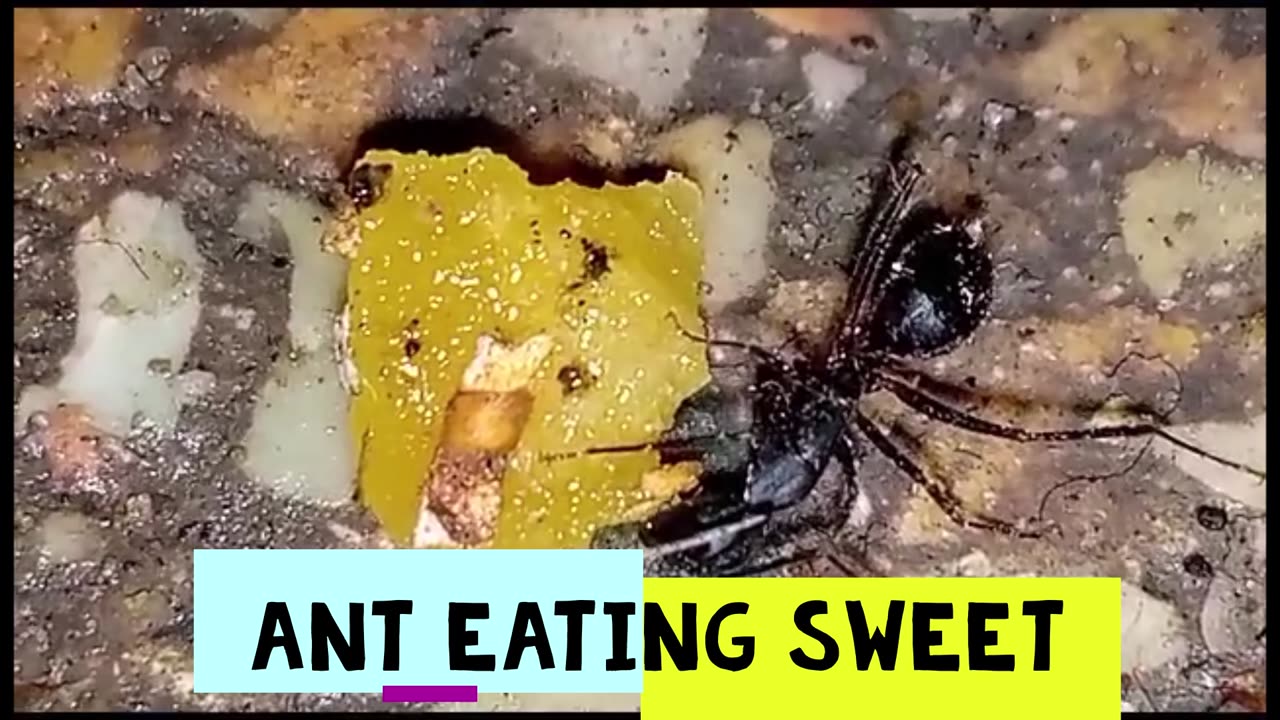Premium Only Content

Social Structure: Ants live in colonies, which can range in size from a few individuals to millions. Each colony typically consists of different castes with specific roles, including queens (reproductive females), males (reproductive males), and worker ants (sterile females).
Division of Labor: Worker ants perform various tasks such as foraging for food, caring for the young, building and maintaining the nest, and defending the colony. Different worker ants may have different body sizes and shapes, suited to their specific tasks.
Communication: Ants communicate with each other primarily through the use of chemical signals called pheromones. These chemical cues help ants coordinate activities such as finding food sources, marking paths, and alerting to danger.
Nesting: Ants build nests in a variety of places, including soil, leaf litter, wood, and even within other plant structures. Some ants build elaborate underground tunnels and chambers, while others construct nests above ground.
Feeding Habits: Ants are omnivores, and their diets can vary greatly depending on the species. Some ants feed on insects, while others consume nectar, fruits, or scavenged materials.
Ecological Importance: Ants play a crucial role in ecosystems as predators, scavengers, and seed dispersers. They help control pest populations, aerate soil, and contribute to nutrient cycling.
Symbiotic Relationships: Some ants have developed symbiotic relationships with other organisms. For instance, certain species of ants form mutualistic partnerships with plants by protecting them from herbivores in exchange for food and shelter.
Ant Society Complexity: Ant colonies can exhibit complex behaviors and strategies. Some species of ants engage in agriculture, cultivating fungi as a food source. Others participate in "raiding" behavior to steal resources from other colonies.
Reproduction: Reproduction within ant colonies is usually controlled by the queen, who mates with males during a specific mating flight. After mating, the queen can store sperm and use it to lay eggs for the rest of her life, potentially many years.
Variety of Species: There are over 12,000 recognized species of ants, and they exhibit a wide range of sizes, colors, behaviors, and habitats.
Ants are fascinating creatures with complex behaviors and interactions. Their study has contributed to our understanding of social organization, communication, and ecological relationships in the natural world.
-

Man in America
9 hours agoTrump to BAN the COVID Vaxx?! mRNA in Your Organic Meat?! w/ Kim Bright
22.5K2 -
 57:42
57:42
Flyover Conservatives
23 hours agoThe Great Gold Cover-Up: Is Fort Knox EMPTY?! - Clay Clark + Dr. Kirk Elliott | FOC Show
27.7K7 -
 1:24:40
1:24:40
Kim Iversen
7 hours agoJeffrey Sachs Just Exposed the Truth They Don’t Want You to Hear
39.2K39 -
 2:11:32
2:11:32
Glenn Greenwald
5 hours agoGlenn From Moscow: Russia Reacts to Trump; Michael Tracey Debates Ukraine War | SYSTEM UPDATE #413
53.2K54 -
 2:19:23
2:19:23
Slightly Offensive
5 hours ago $7.38 earnedGOV. RAMASWAMY? Vivek to import 1 BILLION INDIANS to OHIO | Nightly Offensive
37.7K17 -
 4:51:08
4:51:08
Wahzdee
8 hours agoSniper Elite Then Extraction Games—No Rage Challenge! 🎮🔥 - Tuesday Solos
64.5K3 -
 2:12:58
2:12:58
Robert Gouveia
7 hours agoSenator's Wife EXPOSED! Special Counsel ATTACKS; AP News BLOWN OUT
79.5K55 -
 55:07
55:07
LFA TV
1 day agoDefending the Indefensible | TRUMPET DAILY 2.25.25 7PM
33.7K16 -
 6:09:26
6:09:26
Barry Cunningham
14 hours agoTRUMP DAILY BRIEFING - WATCH WHITE HOUSE PRESS CONFERENCE LIVE! EXECUTIVE ORDERS AND MORE!
101K58 -
 1:46:37
1:46:37
Game On!
9 hours ago $0.51 earnedPUMP THE BRAKES! Checking Today's Sports Betting Lines!
51.6K3